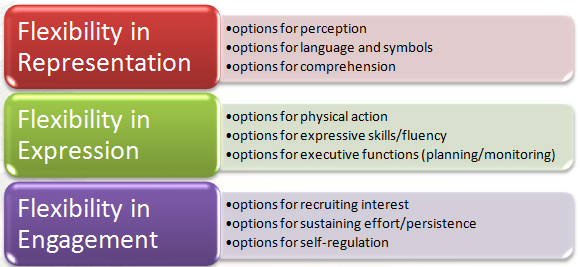 AMiddleWebBlog
AMiddleWebBlog
Chisel a Teaching Masterpiece
Last week I wrote about how high quality instruction must consistently occur before any testing accommodations have a chance of being meaningful. But high quality instruction doesn’t just happen; it has to be crafted. And it has to be given time to become a natural part of the teacher’s style as she or he builds a repertoire of strategies that blend seamlessly with standards, grade level expectations, students’ needs, and personal teaching style.
Recently I went to The Metropolitan Museum of Art. Because I’m always thinking these days about this blog and reflecting on practice, I quickly saw the connections between the skills needed to be a highly qualified teacher and those needed to be a successful artist. More specifically, the skills of a sculptor.
A sculptor uses a chisel as a tool to fine-tune and shape his vision into a work of art. Like sculptors, teachers chisel away to fine tune our teaching creations. Unlike the sculptor, our medium is intangible — but it is also multi-layered and sensitive to slight variations.
We chisel away at our words to make sure we give students the most important facts and ideas clearly. We chisel away at pedagogical theories in order to translate these ideas into meaningful teaching behaviors. We chisel away at our actions in order to perform best practices that will meet the unique needs of our diverse learners.
 In order for the sculptor to create her masterpieces, she relies on a familiar and well-established tool–the chisel. In order for teachers to truly create a masterpiece, we need to search for our tool, and it is not something that is always easily identified.
In order for the sculptor to create her masterpieces, she relies on a familiar and well-established tool–the chisel. In order for teachers to truly create a masterpiece, we need to search for our tool, and it is not something that is always easily identified.
Our masterpieces will not emerge from the packaged program or accompanying teacher’s guide, or that latest KIPP book with all the “how to’s” of being an effective teacher. No, it goes way beyond that.
I’d like to offer my version of a teacher’s chisel–a professional tool that can help us to successfully create optimal learning environments. This tool is called the Universal Design for Learning (UDL).
And UDL can be such a powerful chisel. If we stay mindful as we use it, we can not only create one sculpture at a time, like the artist. We also have the power to create a classroom full of masterpieces –simultaneously. It’s simply amazing.
In my last post I suggested that you watch a four-minute video to give you a foundation for understanding what UDL is all about. So why not take those four minutes to check out UDL at a Glance (if you haven’t already). I’ll be here when you get back.
Back already? OK, another website you need to check out when you have the time is The Center for Applied Special Technology (CAST). CAST is a nonprofit educational research and development organization that works to make learning accessible for all students through Universal Design for Learning.
Comprehensive–CommonCore–CommonSense
Trust me on this: UDL is such a common sense approach to teaching, and it aligns smoothly with the Common Core. In fact, I’m not aware of any other effective way to guide all students to access the core curriculum.
The concept of UDL allows teachers to adapt the curriculum, customize the delivery of instruction, and assess understanding in ways that allow students to demonstrate knowledge, play to strengths, and flourish as learners.
Lesson planning using the UDL approach encompasses three guidelines or provisions:
1. Multiple means of representation
2. Multiple means of engagement
3. Multiple means of expression
My district has not yet formally adopted a UDL framework, but I am working with colleagues to bring a higher sense of awareness and application on a district-wide level. As I stepped out on this journey a year or so ago, I began by noticing what teachers in my district were already doing–without any knowledge that their practices already aligned with UDL. This was great news because as I work to bring UDL to my district more formally, the transition will be a very smooth one for so many teachers. And it doesn’t hurt that UDL aligns with the Common Core standards that are on everybody’s minds.
Here’s some examples of UDL-compatible practices — things I do and see as I teach alongside my colleagues:
Multiple Means of Representation:
- Homework is written on the board for students to copy into their agenda
- Homework is posted on a class website for all to access
- Directions for class work are visually displayed to supplement the auditory modality
- Graphic organizers are used routinely
- Aim and lesson objectivesare posted on the board
- Outlines of class notes are provided to guide understanding of key ideas
- We use clear language and repeat key words and ideas
- We use document cameras and interactive whiteboard slides to model thinking and key concepts
Multiple Means of Engagement
- Students repeat directions following teacher explanations
- We have open class discussions, and students add their thinking to the thinking of others
- We include cooperative learning activities, such as think-pair-share, and jigsaw
- We allow options of working with peers or working solo
- We have individual dry erase boards to record and display thinking and responses to questions
- Strategies such as Question-Answer Relationship (QAR) are used to guide comprehension
- During shared reading, all students can follow along with individual copies of the text as the teacher reads aloud
Multiple Means of Expression
- We do quick-writes
- We use dry erase boards as response cards
- We provide visual and auditory feedback
- Students complete graphic organizers
- They sketch/write/speak to express their understanding
- We allow use of spell-check, dictionaries, thesaurus
- Students discuss thinking with a partner before responding
- We use checklist/outlines/organizers to check off steps toward task completion
Clearly the ideas I’ve expressed so far are all examples of low-tech, multiple means to guide students to comprehend content at deeper levels. In an upcoming post I will outline how the framework of UDL aligns naturally with the reading and writing Common Core anchor standards in my inclusion English class.
As you will see, it is truly amazing how UDL, natural teaching common sense, and the Common Core blend so seamlessly together. It’s all about making the curriculum accessible to everyone. And isn’t that what we all should be about?
Give your teaching a closer look. What UDL strategies are you providing? What UDL strategies would you like to provide?
UDL Graphic: Palm Beach Schools


You need to be a member of School Leadership 2.0 to add comments!
Join School Leadership 2.0